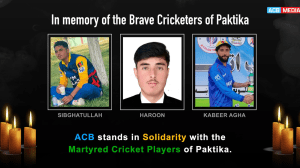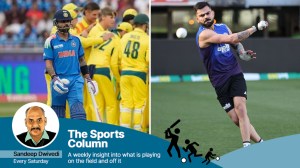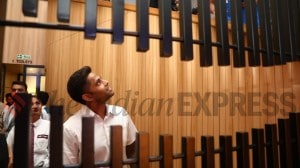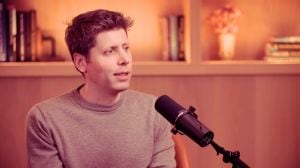‘Gujarat DGP’s duty to probe phone records’
These cellphone records have little value, they do not prove anything...they can (only) be used to trace the movements of the accused.’...

These cellphone records have little value, they do not prove anything…they can (only) be used to trace the movements of the accused.’’ This was Gujarat DGP A K Bhargav, the man who heads the 10-member team set up on the orders of the Supreme Court to review the estimated 2,000 closed riot cases.
Harish Salve, the Supreme Court’s amicus curiae whose application led to that order, strongly disagrees.
Responding to the ongoing investigative series by The Indian Express showing who called whom during the worst days of the Gujarat violence, Salve said: ‘‘If the committee headed by the Gujarat police chief does not take cognisance of these records, it would be violating the very purpose for which it had been set up by the Supreme Court to re-examine all the riot cases that had been closed without charging anybody.’’
Calling for an ‘‘in-depth inquiry’’ into these records—which have been gathering dust with the police for months now until The Indian Express began investigating them—Salve said: ‘‘They (the cell phone records) expose one very disturbing fact. That even after two years, the Gujarat police have not come clean on the riots.’’
Asked if he would take up the matter before the Supreme Court, Salve said he was considering that possibility.
Significantly, the senior advocate believes that the mobile phone records warrant Central intervention. ‘‘If the Gujarat Government fails to do its Constitutional duty, the Centre can very well direct it to pursue the matter. This is not a mere law and order issue.’’
The Indian Express investigation has so far showed not only how riot accused, VHP and BJP leaders were constantly in touch with the top police brass and government officials, including key aides in the Chief Minister’s Office, they reveal glaring discrepancies between what happened on those days and what the police claimed had happened when they deposed before the Nanavati-Shah riots panel.
For example, BJP MLA Maya Kodnani has claimed that she wasn’t at Naroda when the massacre happened when cell phone logs show that she was there.
Similarly, Police Commissioner P C Pande told the commission that he came to know of the Naroda Patiya violence—where 83 were killed—only at 9.30 pm on February 28, 2002, when ‘‘I received information that some persons had been killed there.’’
By then the massacre was over and his records show that right through the afternoon, from 2.30 to 9 pm, he was in constant touch with two senior police officers in charge of Naroda and Gulbarga Society where the day’s second massacre took place.






- 01
- 02
- 03
- 04
- 05

























